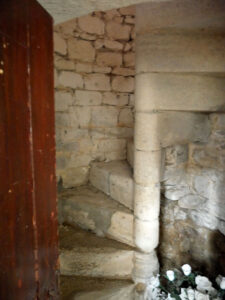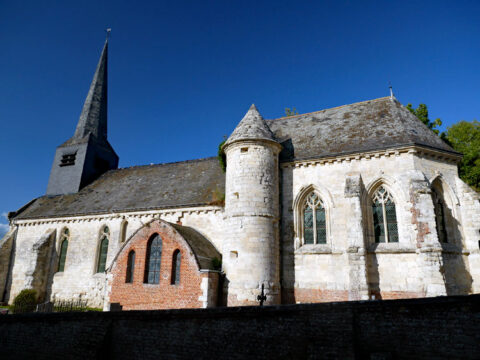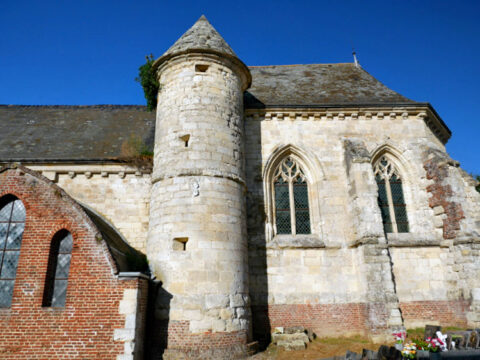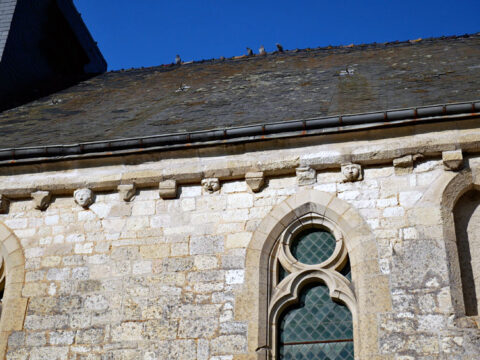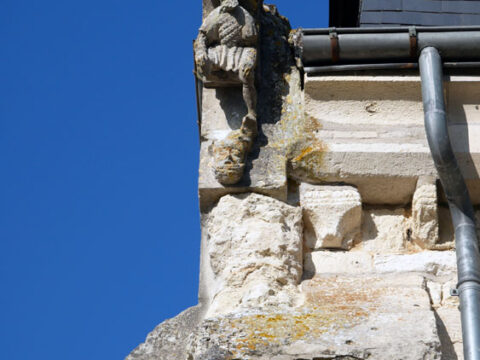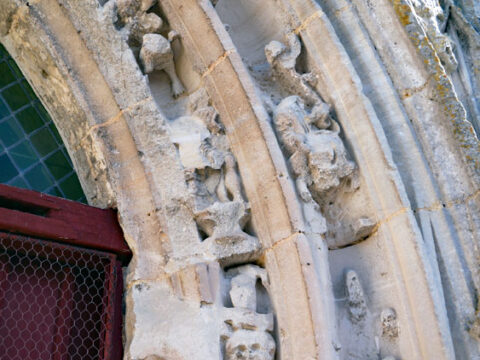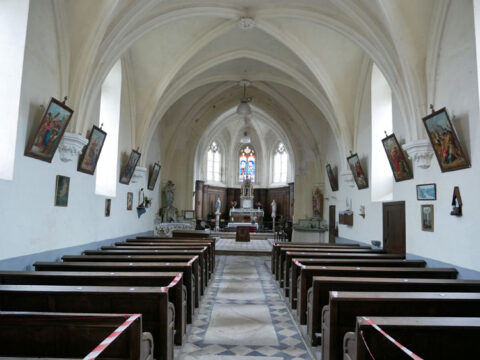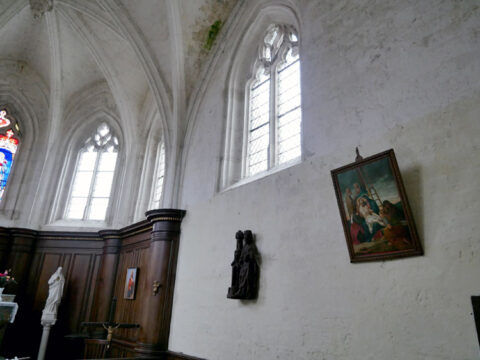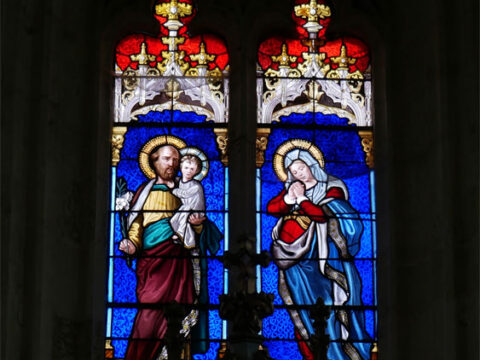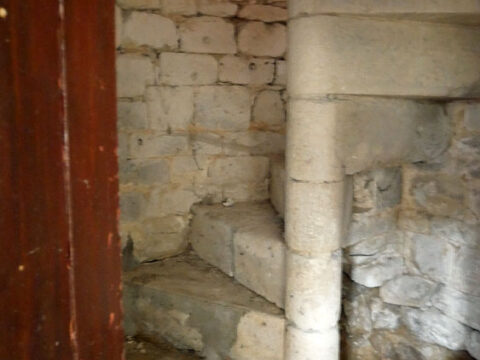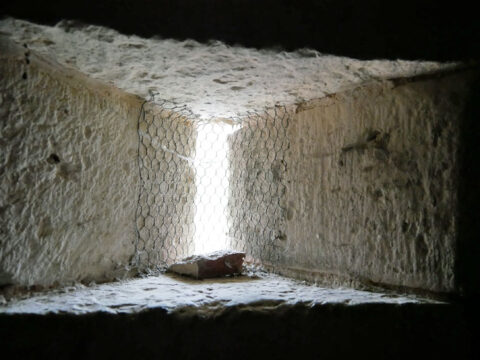Agnicourt Église Saint-Médard
Église Saint-Médard Agnicourt
Where to find this church
Church Information
Église Saint-Medard is located in Agnicourt-et-Séchelles, a commune with 185 inhabitants about 6 km north-west of Montcornet in the Département Aisne in the région Hauts-de-France.
* denotes external links that open in a new window
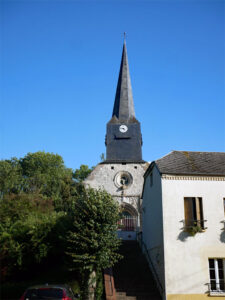
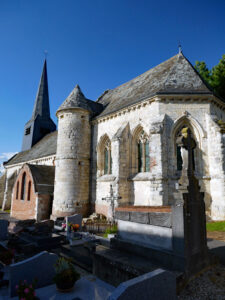
Visiting Église Saint-Médard
First of all, Saint-Medard in Agnicourt is attractive because of its beautiful location directly above an old mill on the river Serre. This is certainly a great picnic spot.
Although Saint-Medard was listed as a “Monument Historique” worthy of special protection as early as 1921, the condition of the church is sad. A tree is growing out of the northern fortress tower (see slideshow), and the area below is closed off for fear of falling masonry. Obviously, renovation work is urgently needed to preserve this actually very beautiful church.
It is a stone building from the 12th century (nave), which was almost completely rebuilt at the beginning of the 16th century (choir and portal). Further extensive building measures followed in the 19th century. The roof and stained glass windows were damaged in World War I. The towers in the north and south at the level of the choir, perforated by loopholes, correspond to the requirements of the fortified churches of the 16th century.
The row of decorations below the roof on the south wall and on the corner of the entrance portal is very beautiful and has already been restored in part. The portal is also richly decorated; unfortunately, the figures here are hardly recognisable due to the likewise very poor condition.
During our visit, the church was surprisingly open, which is probably rather unusual according to various sources. (If this is not the case, however, it is possible to take a look inside through the grille at the portal).
Unfortunately, the poor condition of the building continues inside. Dampness has taken hold here, it smells musty and mouldy, which even the white plastered walls cannot hide.
When you enter the chancel area, which has 18th-century wooden panelling, you see wooden doors on the right and left directly behind the chancel arch. Naturally, these arouse the interest of anyone interested in church architecture, so I had to inspect at least the one on the south side (which is certainly not in the spirit of the congregation; so please don’t copy it!). It opens into a staircase that leads up into the south tower. After a few steps, however, the poor overall condition of the church kept me from going further up.
Otherwise, a statue of St. Barbara made of carved oak from the 16th century is worth noting.

